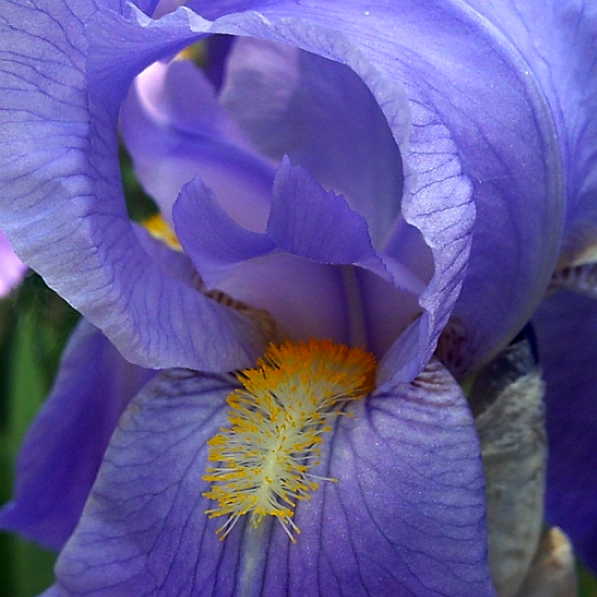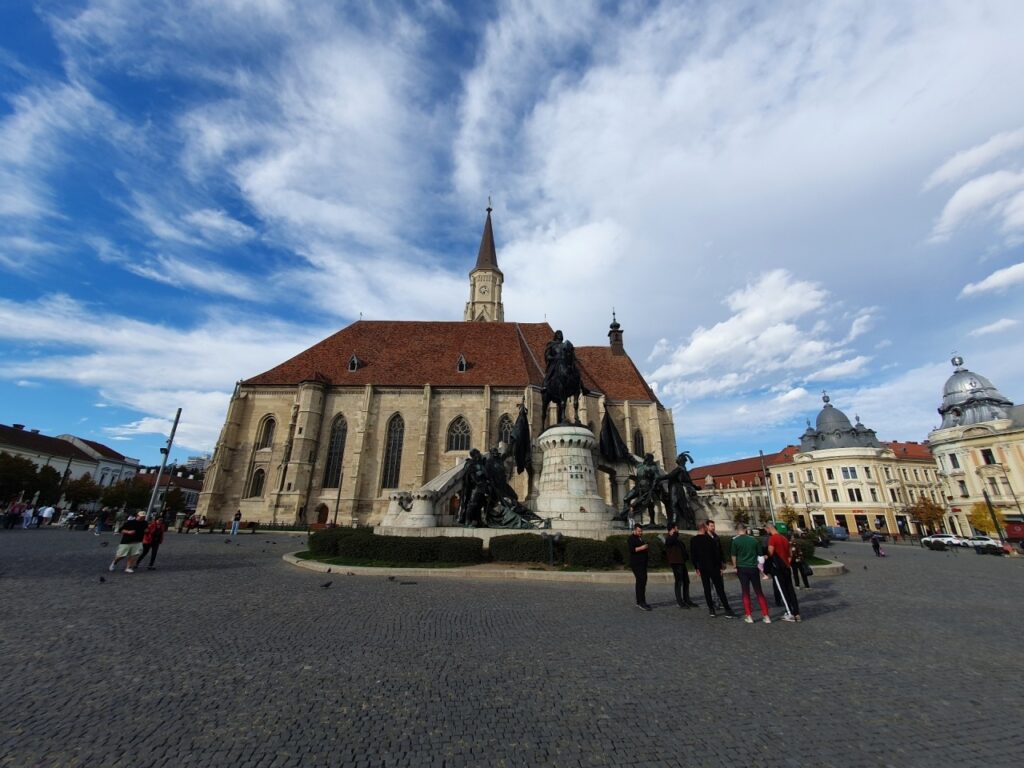This is the final article of our voyage through Cluj-Napoca. We began in the north, then we had a walk toward the center, we stopped a bit in the central park, then we came from the west outside the walls, we had a walk inside the walls, then we went south, and finally we went eastwards and visited the Opera square. Today we will have a final walk in the Unity square and around the Catholic cathedral, the most iconic part of Cluj.
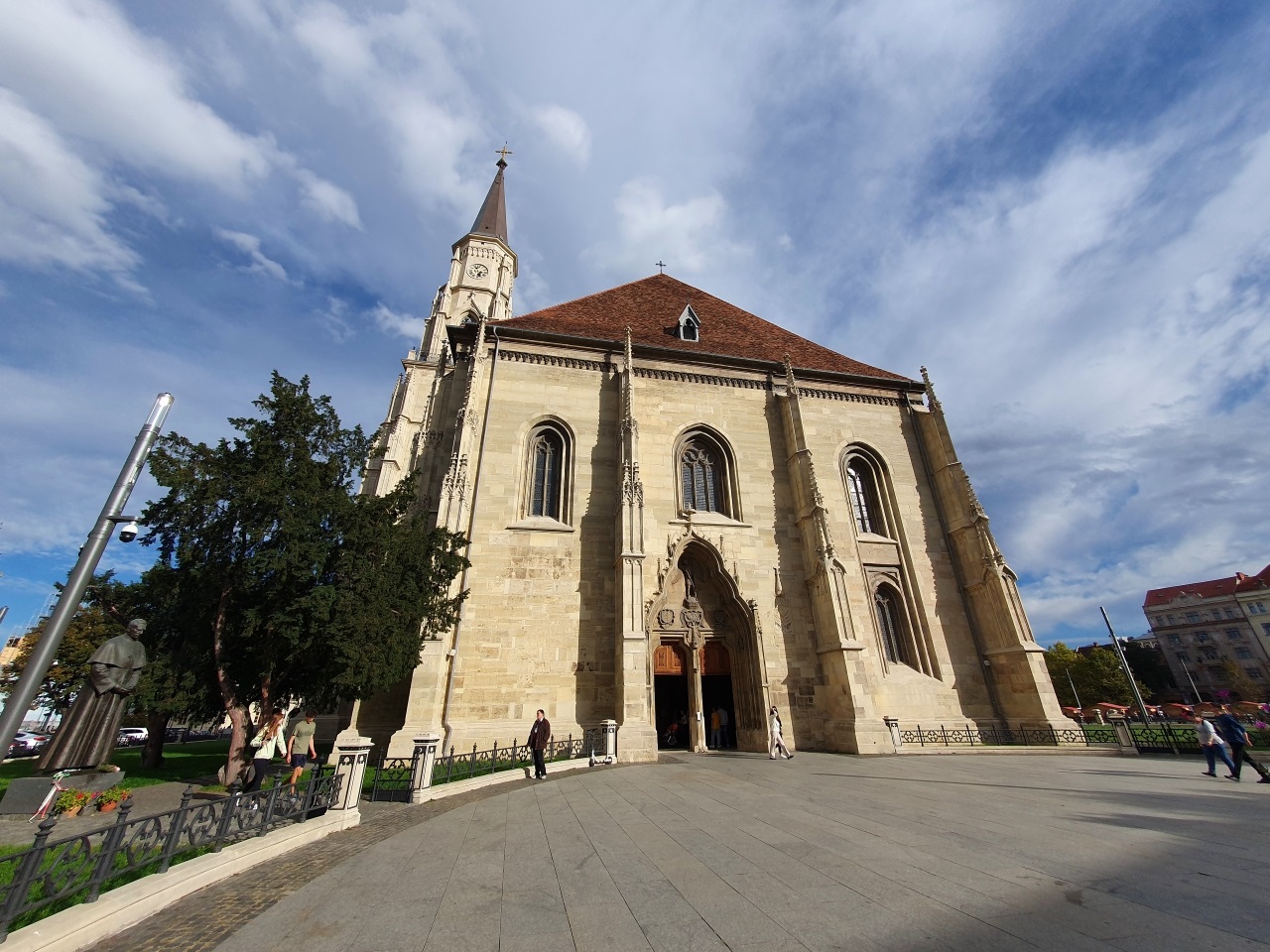
This is the entrance to the St. Michael Roman Catholic Church. To the left is the Statue of Bishop Márton Áron of Transylvania, erected in 2009.

The St. Michael Roman Catholic Church was built somewhere before 1349, when it is mentioned for the first time. It is not a cathedral, although everyone calls it this way.
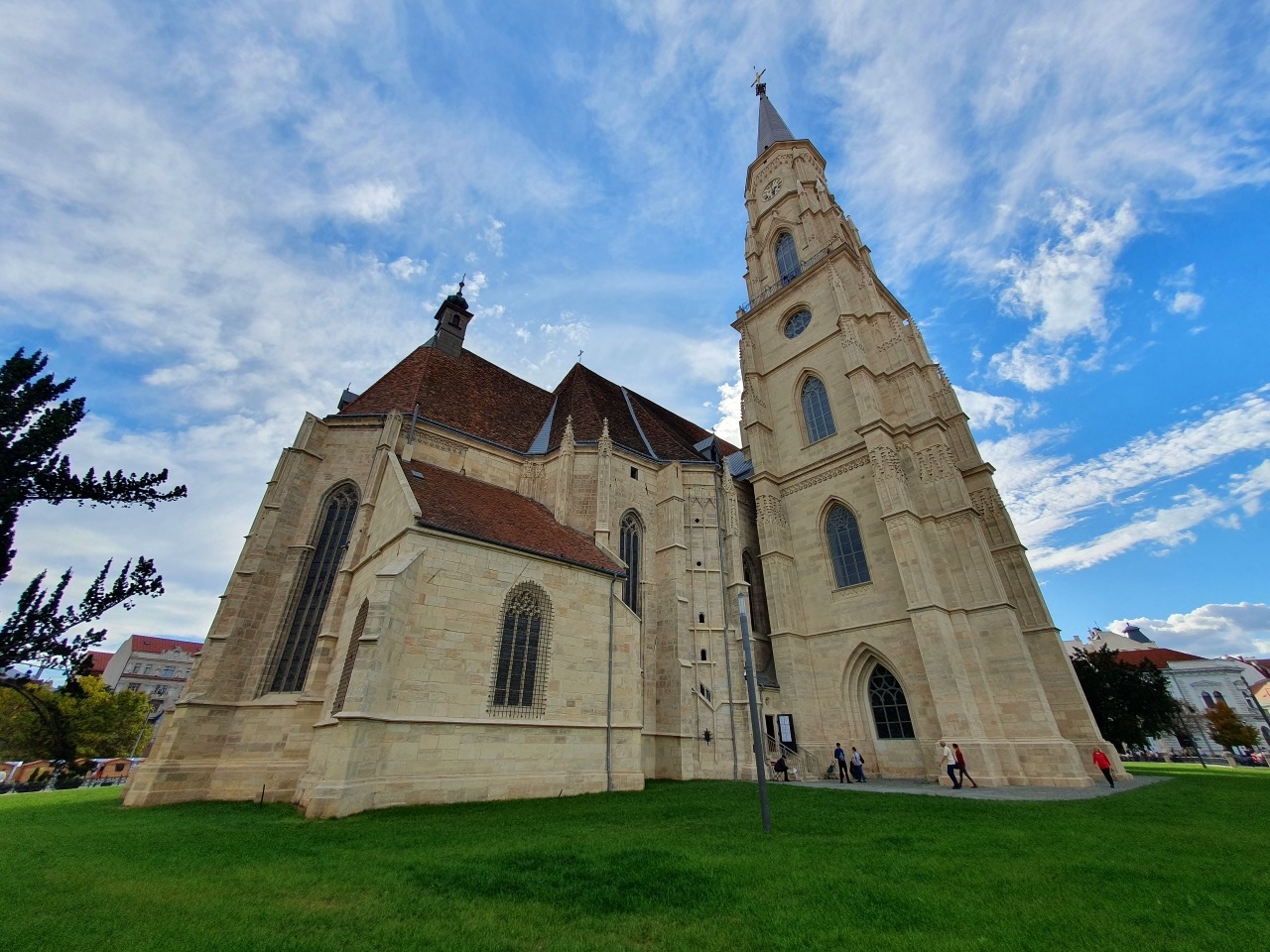
It used to have huge fir trees around it during the last years but I see that now it is completely changed and the façade is newly renovated.
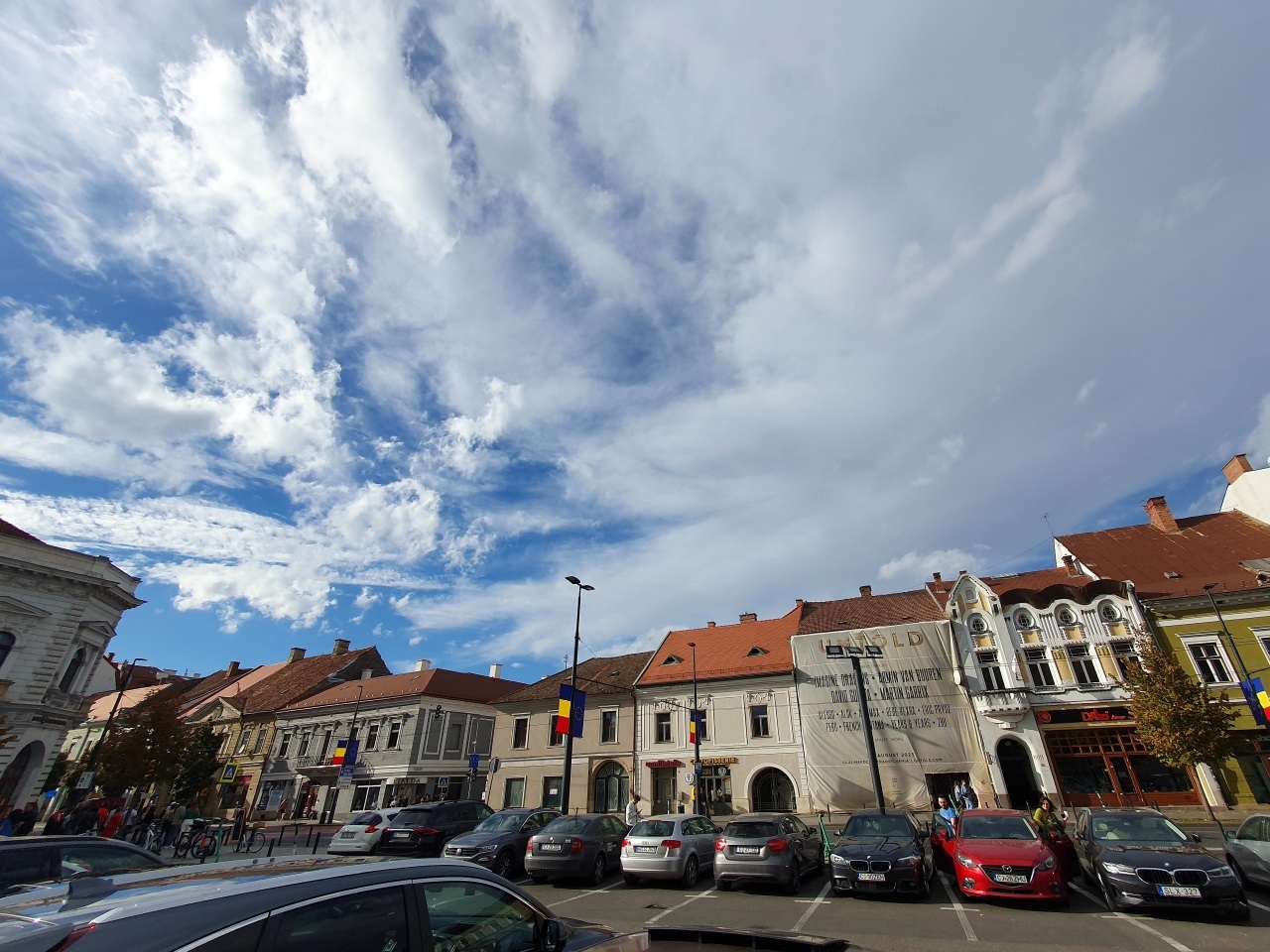
This is the north side of the square, with Rialda, Rósás House (16th century) and Püspöky House (1571, white and yellow).
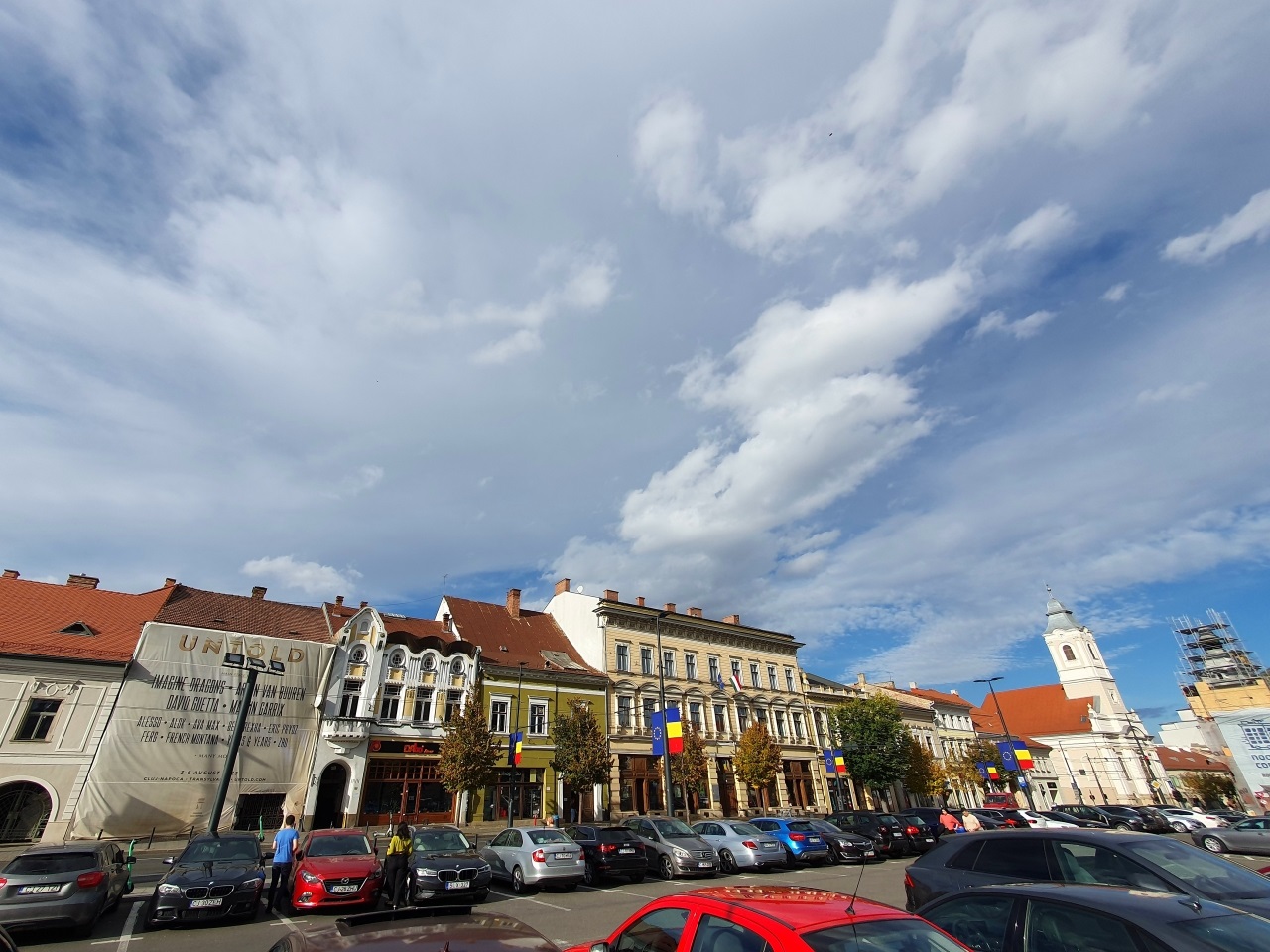
The row continues with the tallest building, the Rucska House, also the Consulate General of Hungary, built in 1883, then the former Craftsmen’s Association (1884), and the already known Filstich-Kemény House, Mauksch-Hintz House and the Lutheran Church. In the extreme right side is Melody Hotel, under renovation.
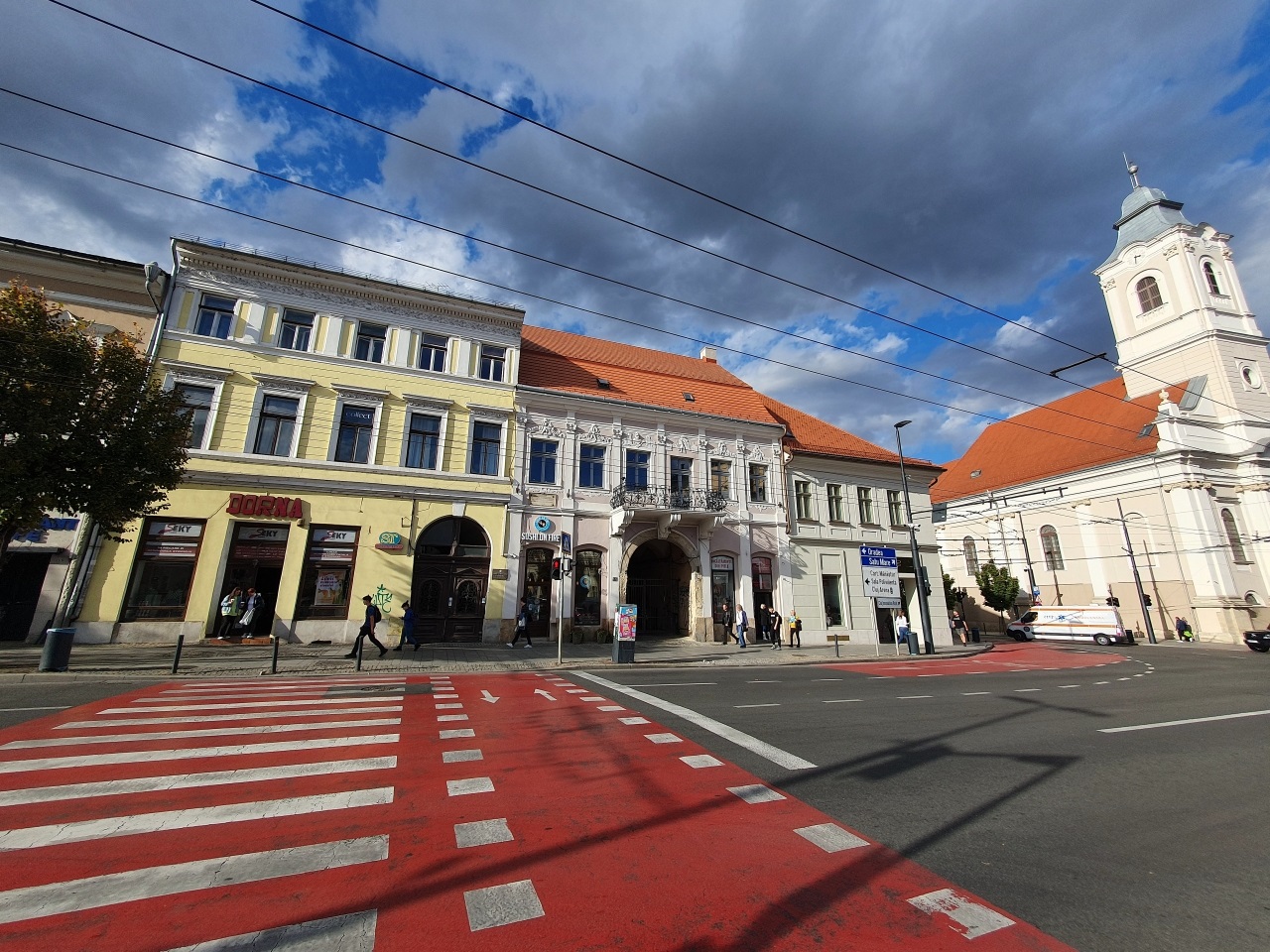
Some details.
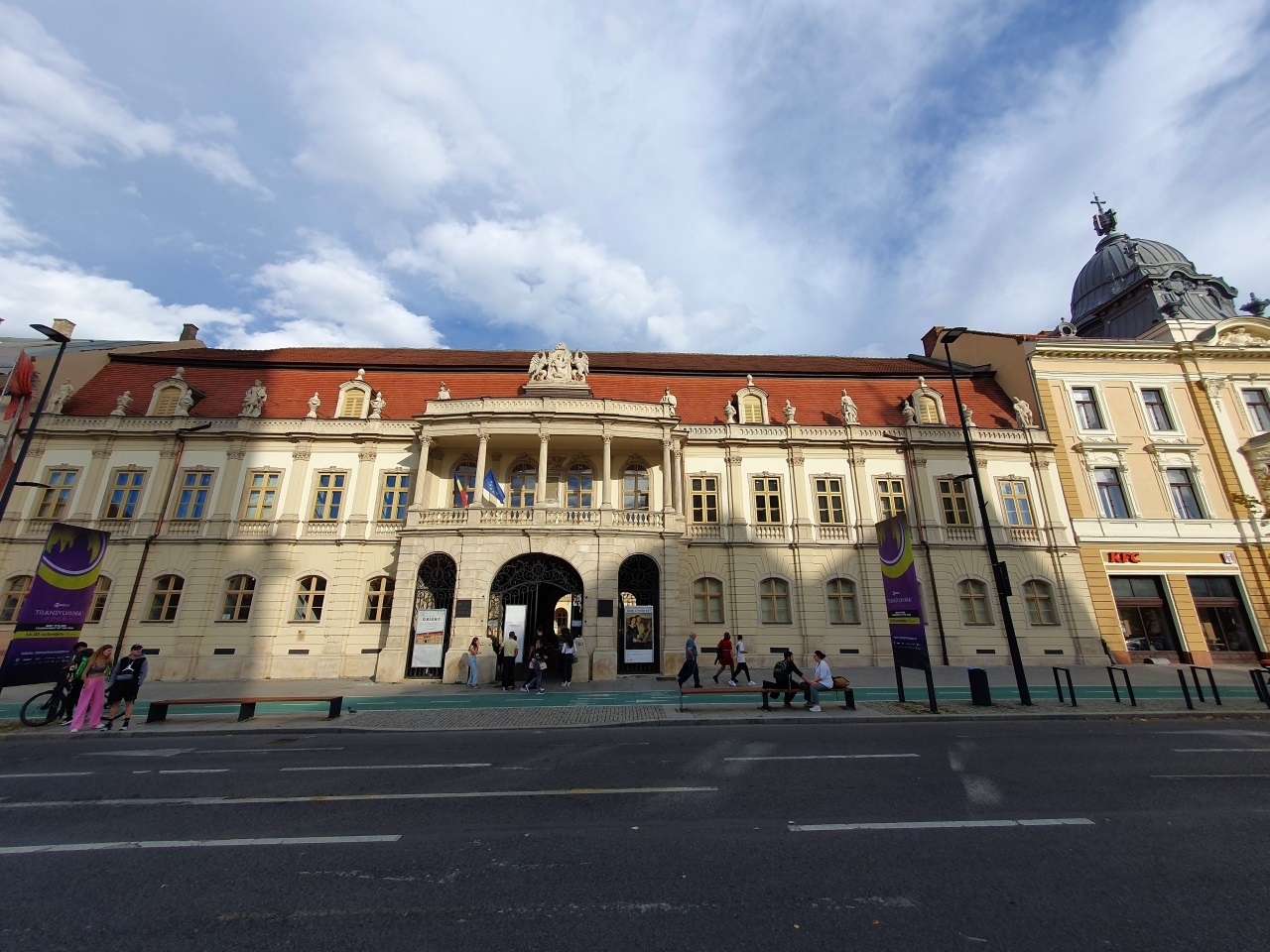
The east side of the square is formed by the Bánffy Palace, also Museum of Fine Arts, built in 1774. It’s one of the most important buildings in Cluj.
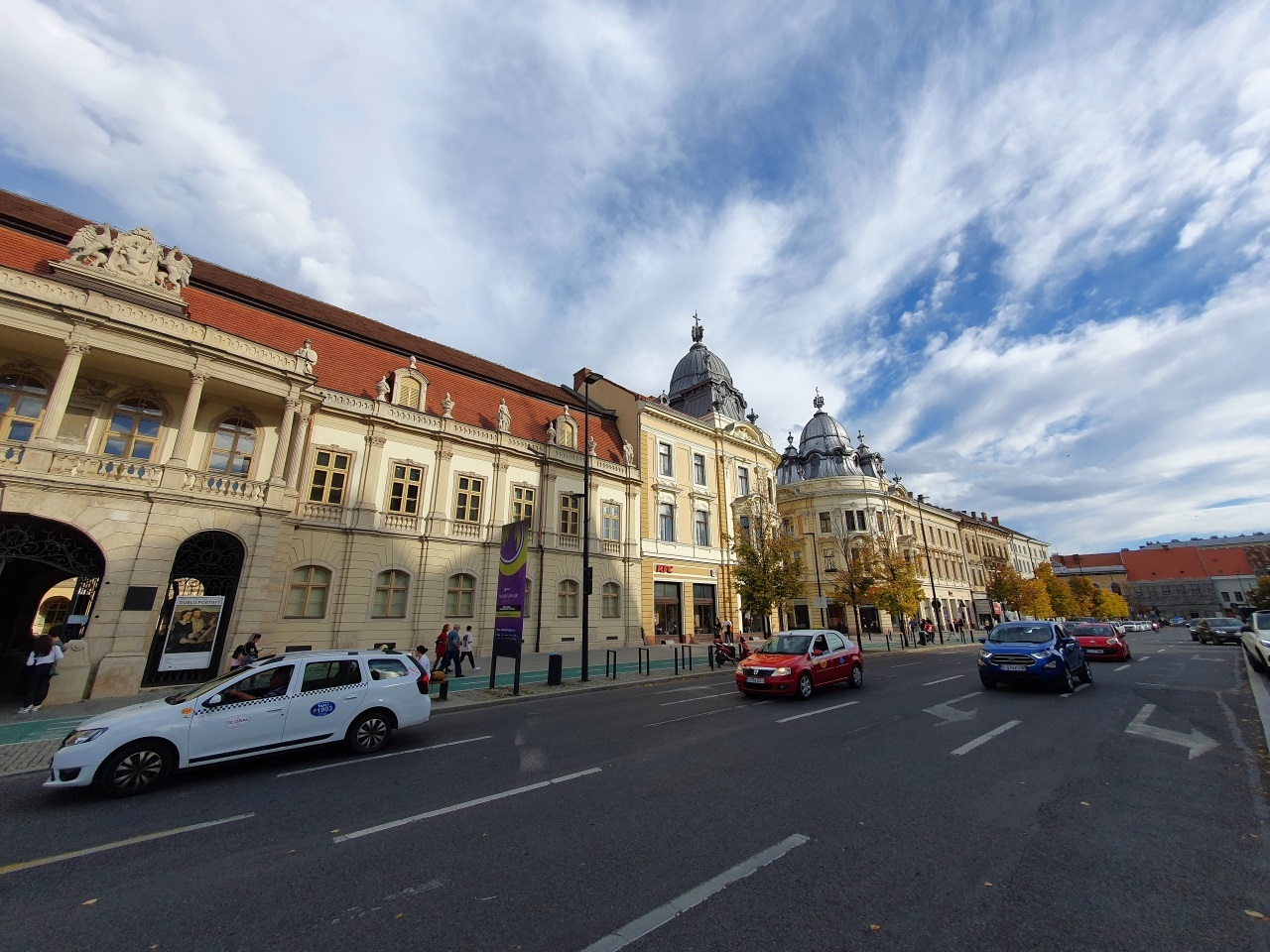
The rest of the east side of the square, with the Status Houses in the center and Wolphard-Kakas House farther, up to the Pataki–Teleki House.
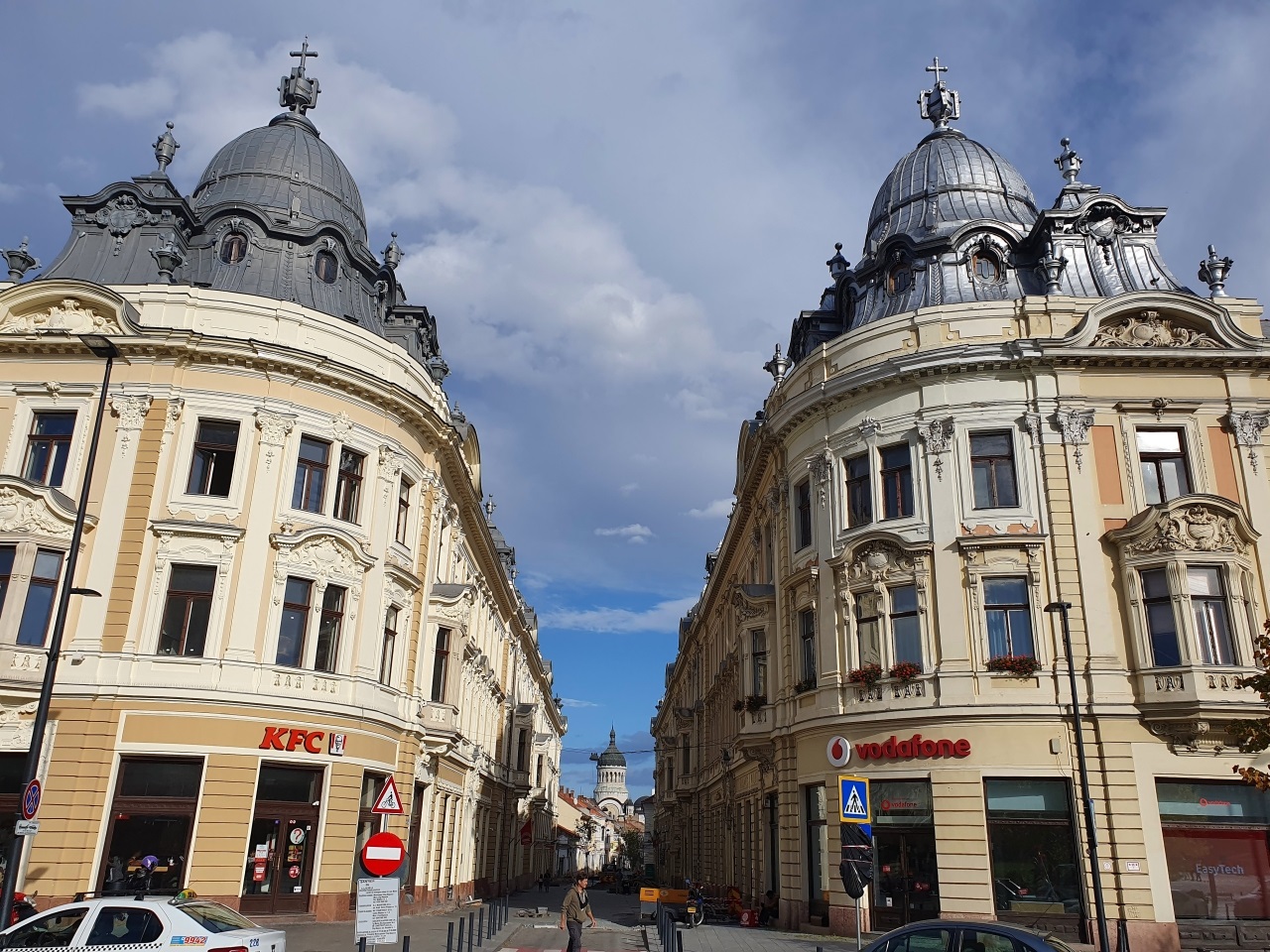
The Status Houses are named after the Transylvanian Roman Catholic State, the builder of the houses. They were built around 1989, in the neo-baroque style. They are informally called “the houses in mirror”, because they are similar and face each other.
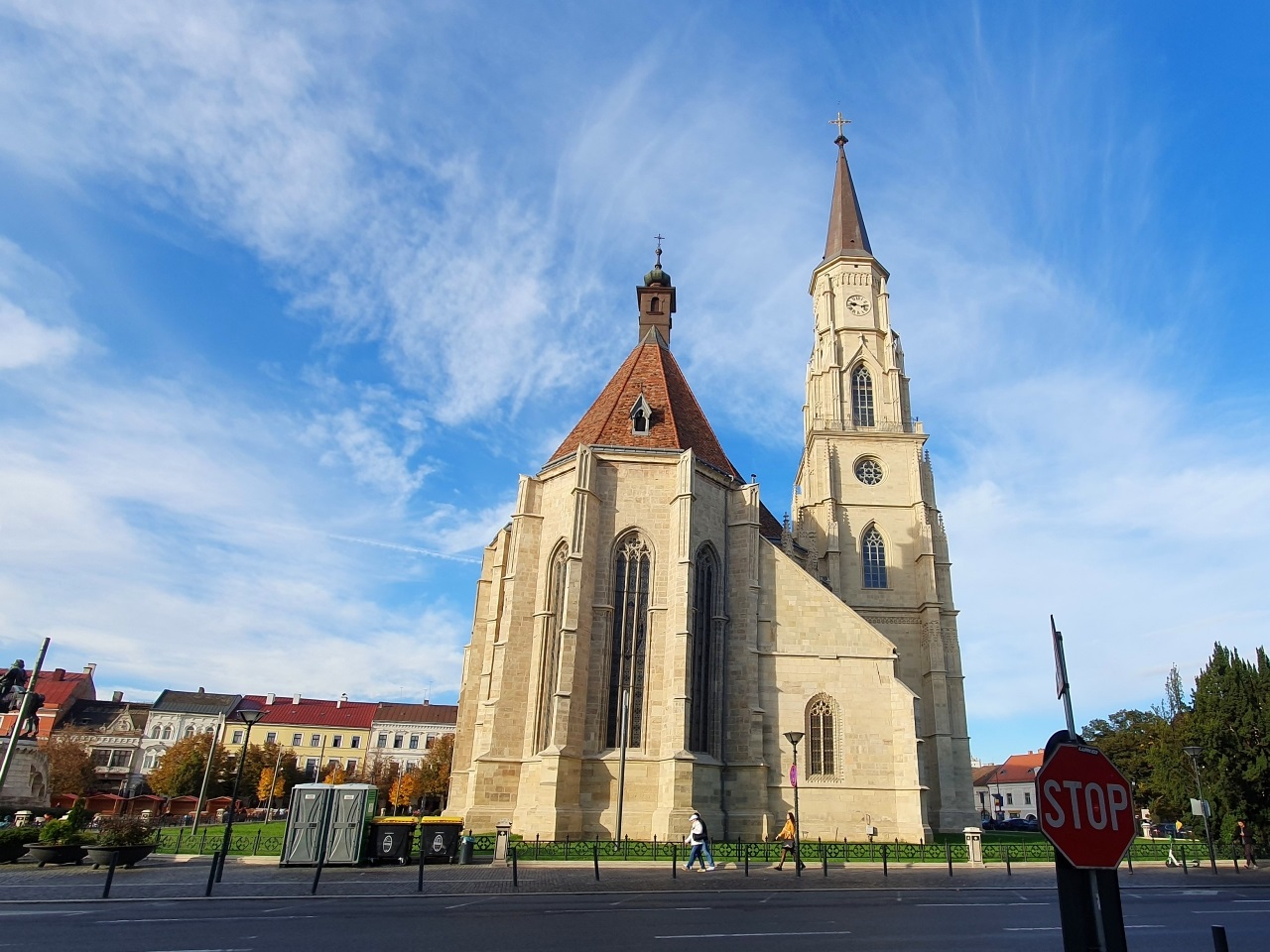
The Cathedral seen from the 2 buildings.
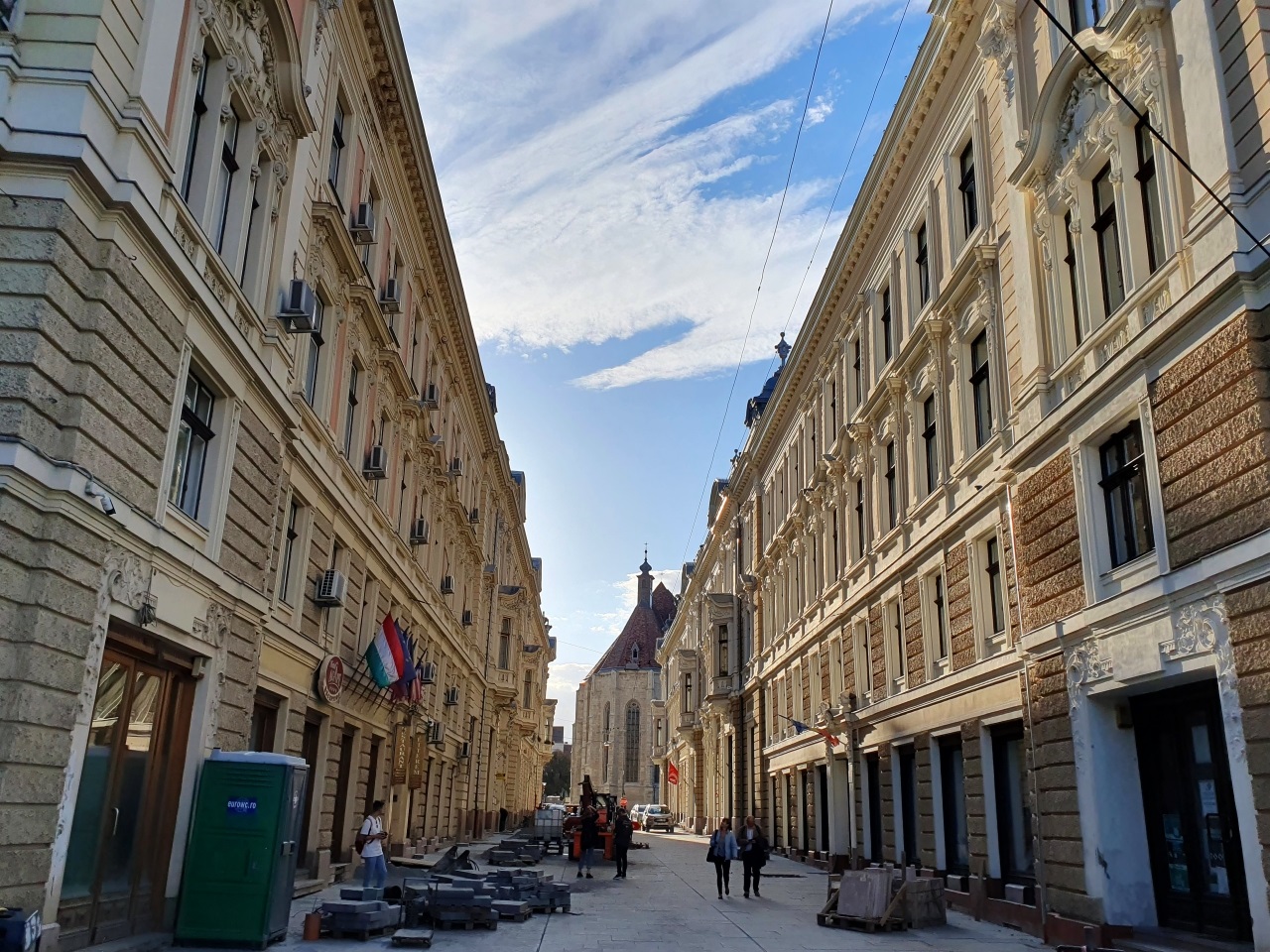
My favourite view of Cluj, between the 2 buildings.
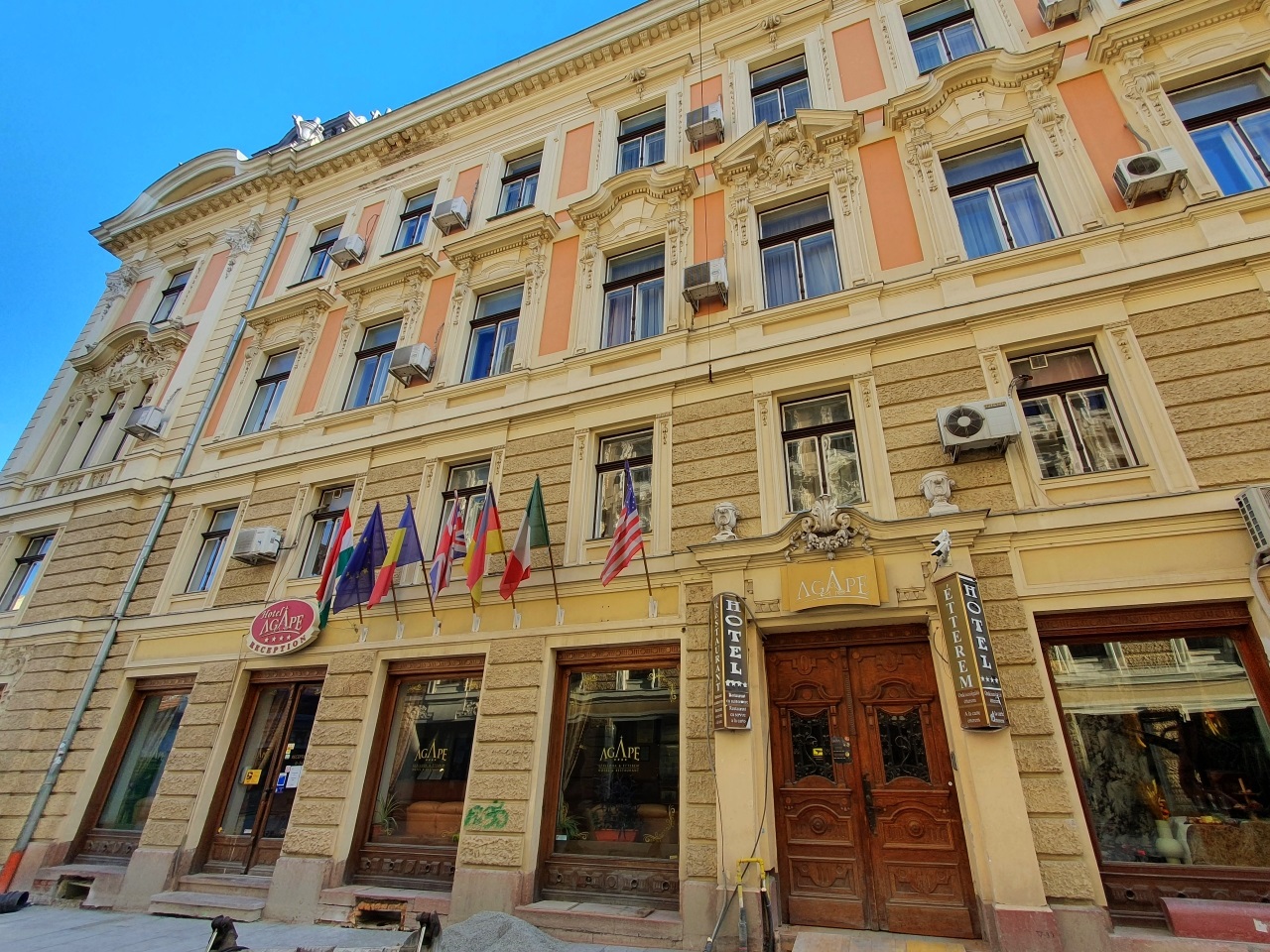
The Agape Hotel nearby.
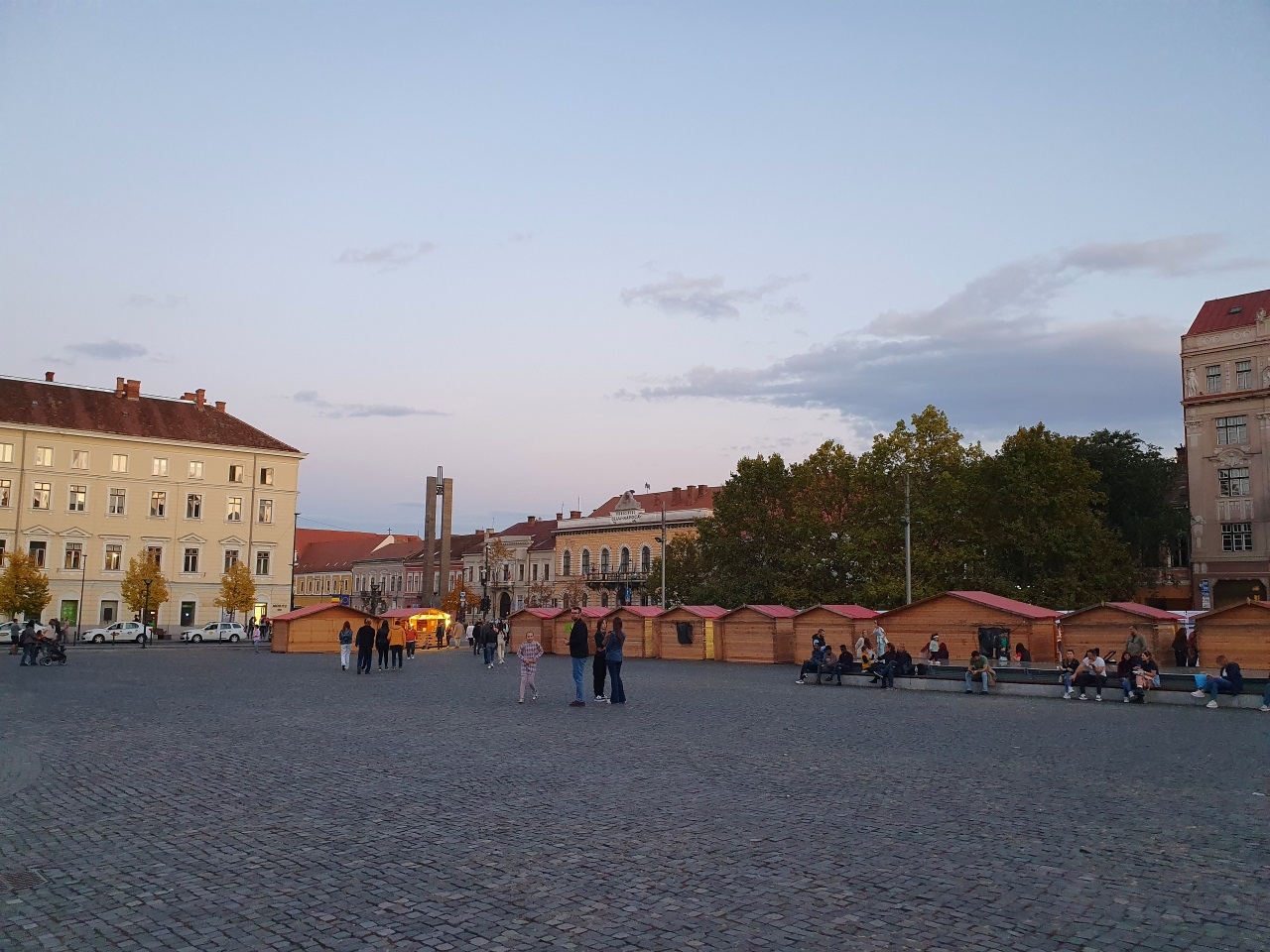
A classical view of the south-eastern corner of the main square.
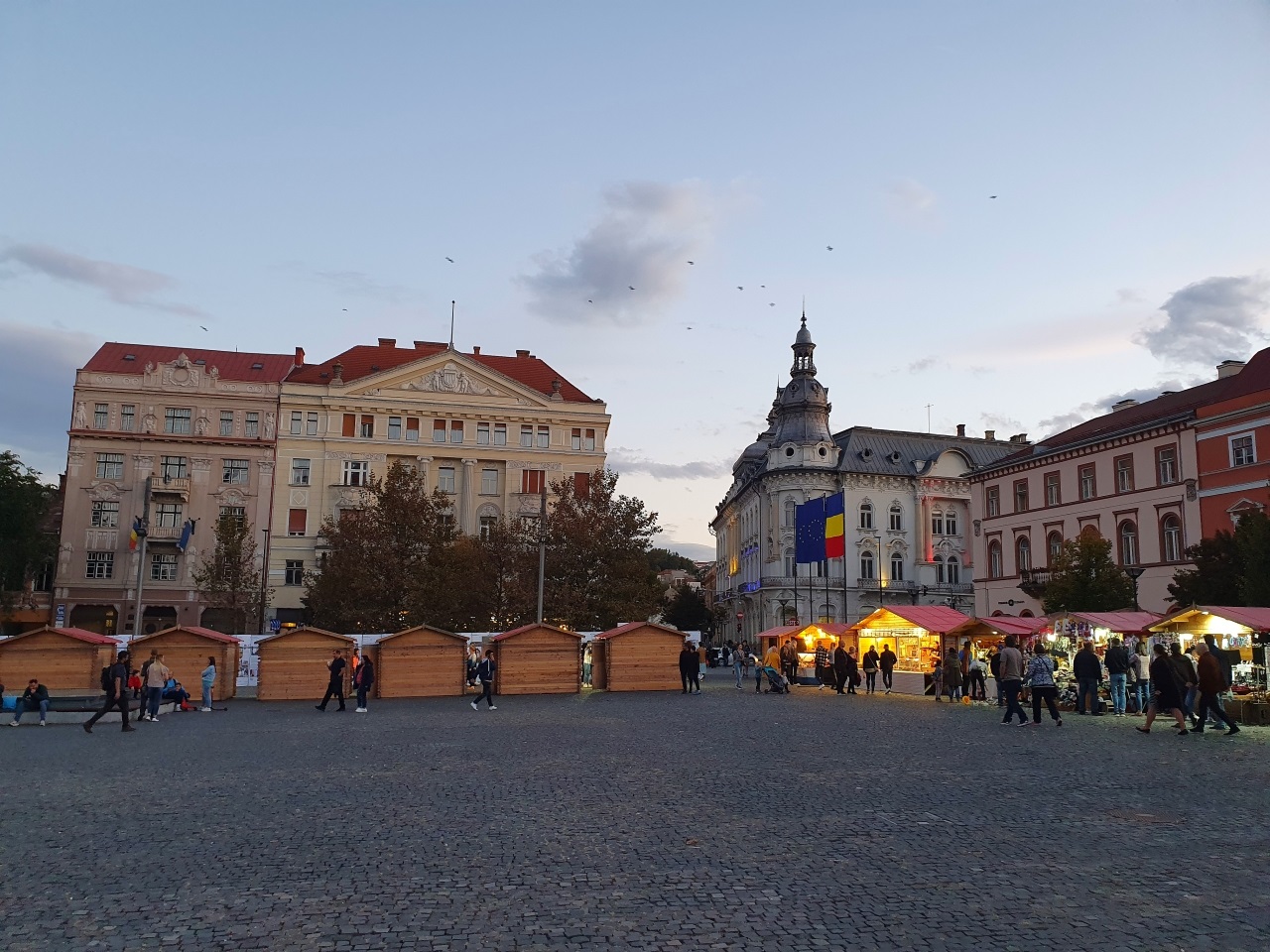
Most of the southern side of the square is made of important buildings. To the right is the Jósika Palace (red), Rhédey House (pink), then the Continental Hotel (former New York Hotel, built in 1893 in the neo-Baroque style, currently abandoned and in ruin, although it’s one of the most beautiful buildings in Cluj), and in the center there is the Sebestyén House or the First Hungarian State Insurance Company, built in the Art Nouveau style, and the last one to the left is the National Bank of Romania, the former Savings and Credit Bank of Cluj, also former headquarters of Transylvanian Fine Arts Guild (built in the early 1900s).
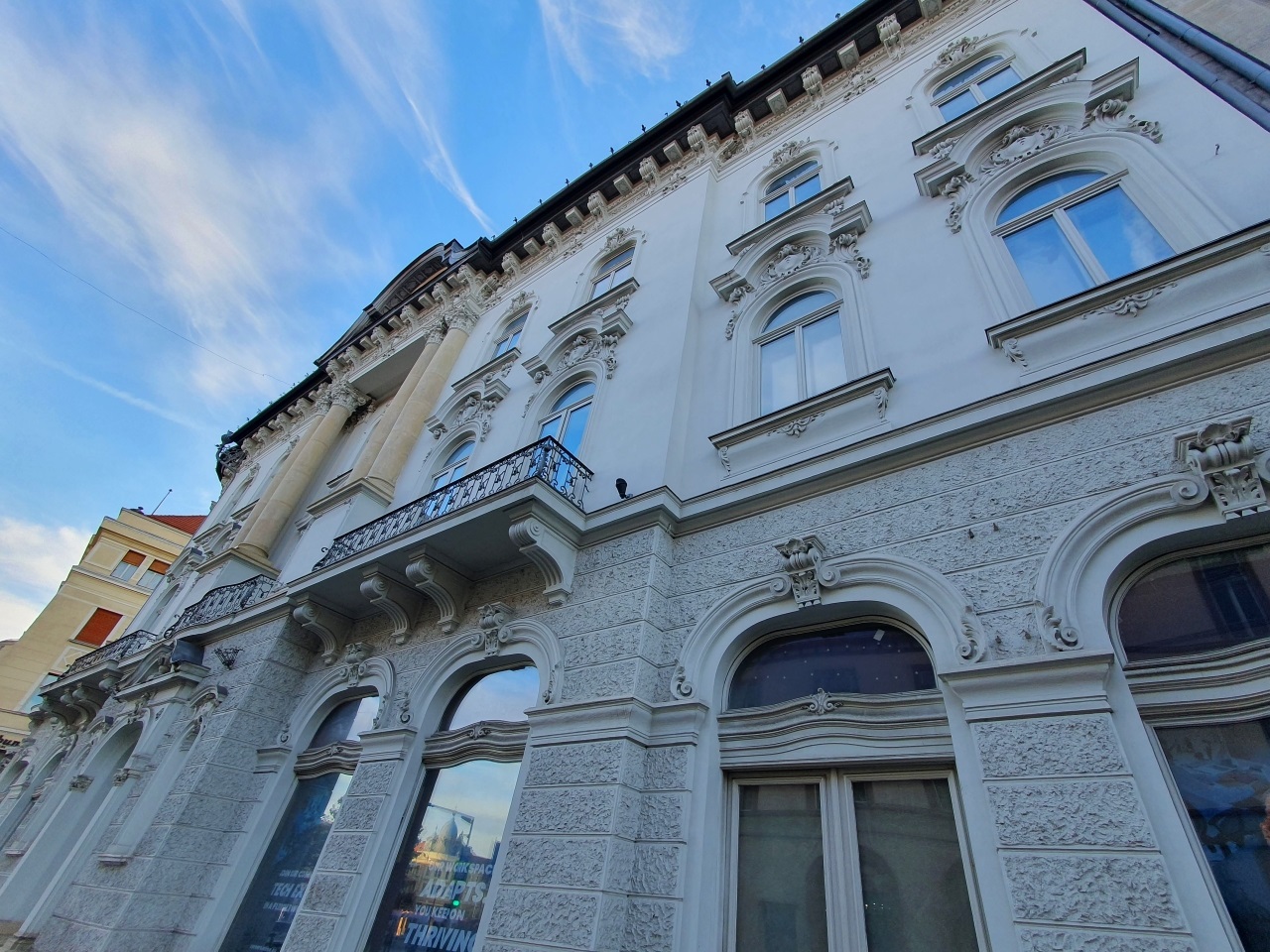
A detail of the Continental Hotel.
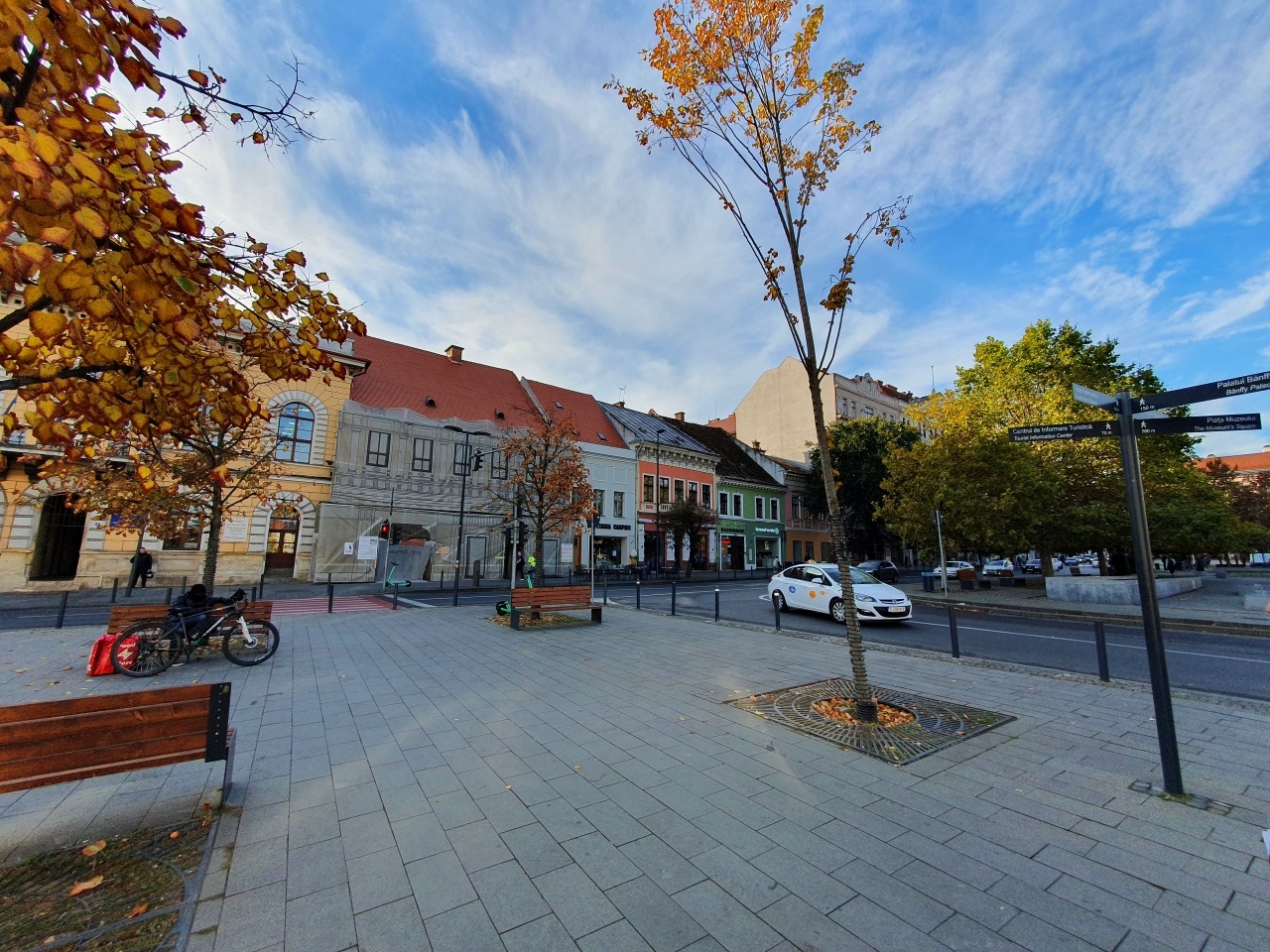
Sitting in the south-eastern corner we can see the Filstich–Ákontz House (the green one). The old Town Hall is recognizable in the left side of the image.
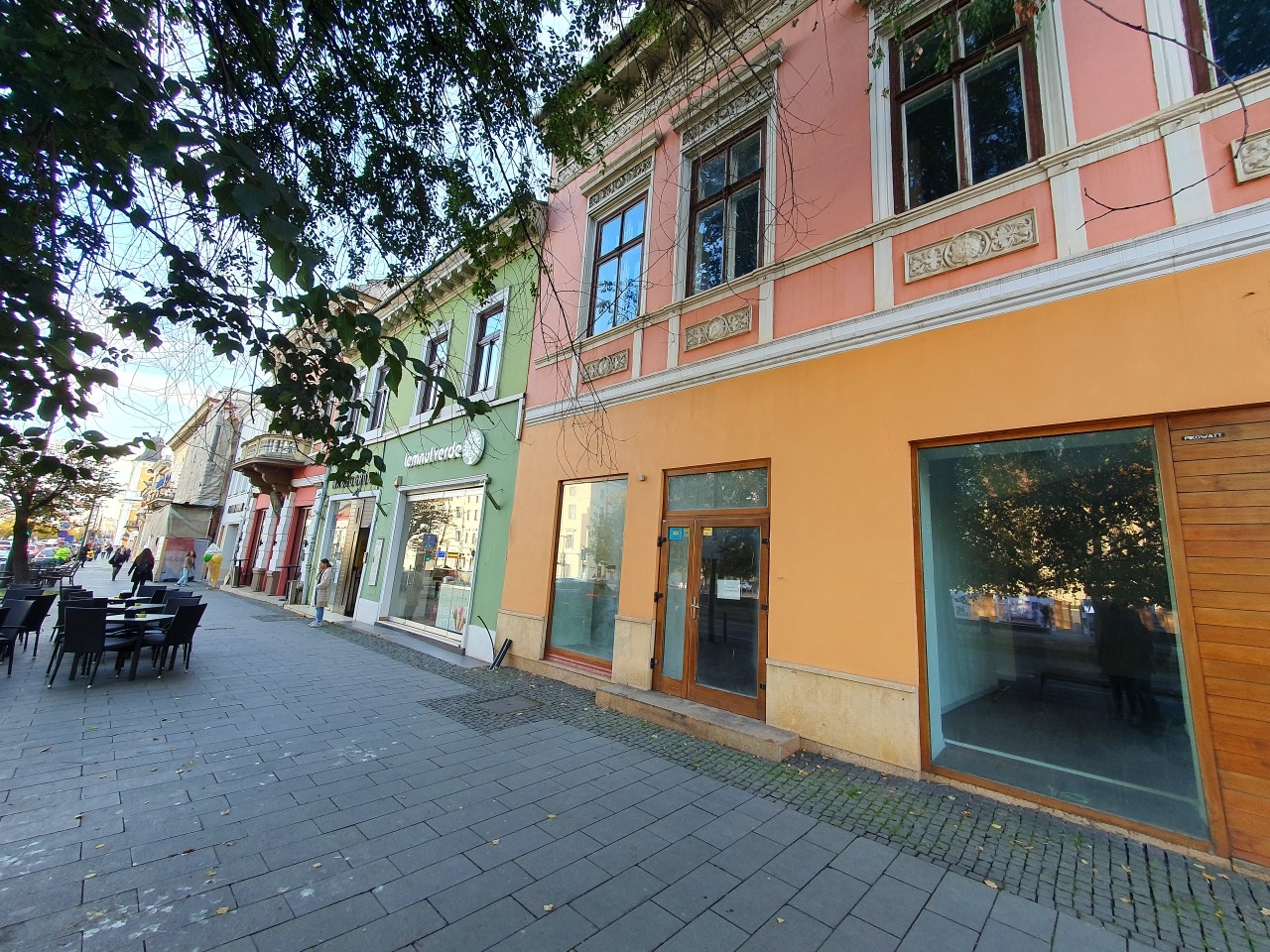
Another perspective.
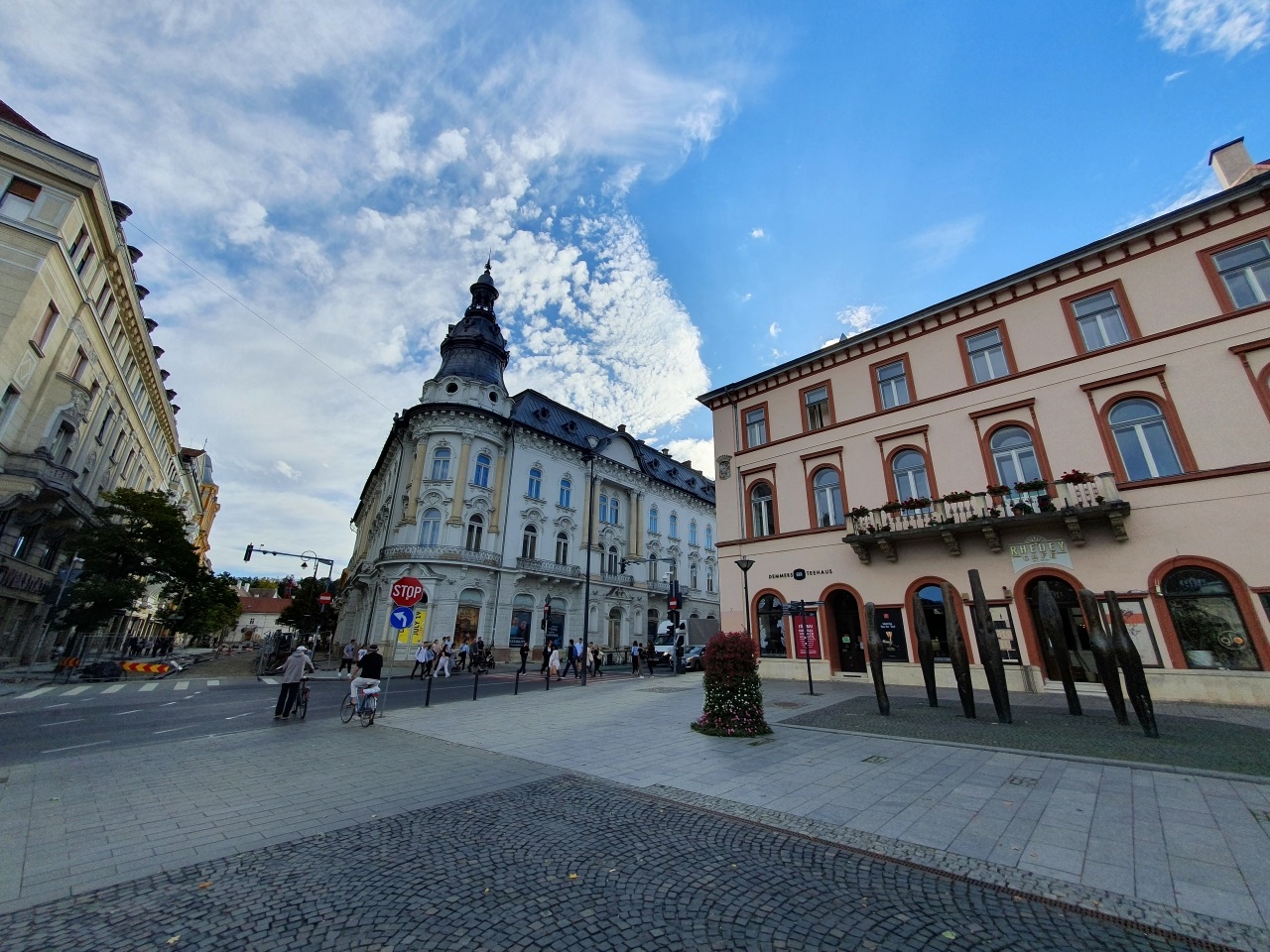
Now, returning to the south-eastern corner of the main square, we will walk by the west side. The Rhédey House to the right was built in the mid-16th century; it houses the Transylvanian Museum Association and a couple of cafés.
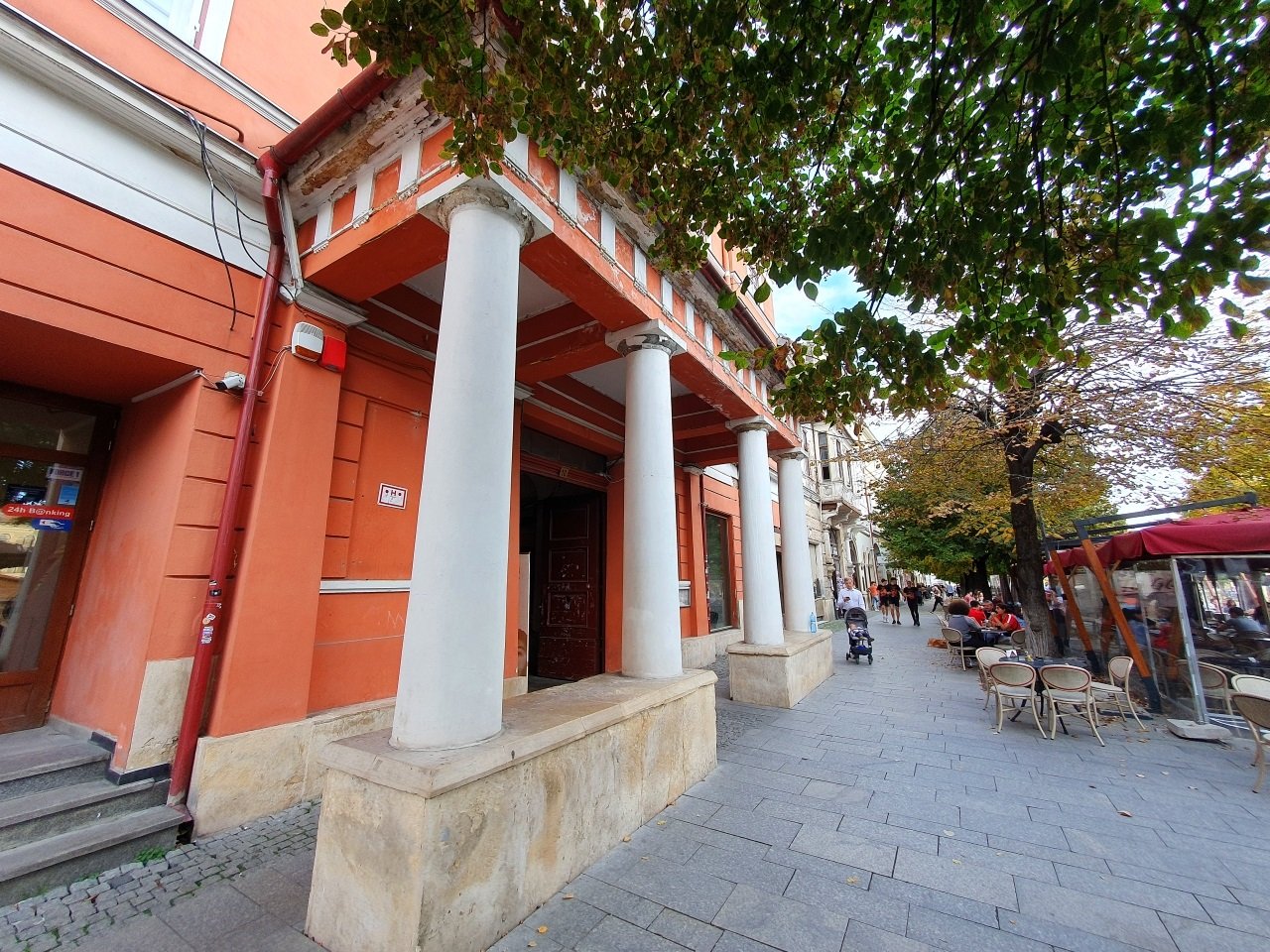
The Jósika Palace was built sometime in the 16th century and most of the Princes of Transylvania stayed here during their stay in Cluj. Hosted for some time a casino, then used by various cafés nowadays.
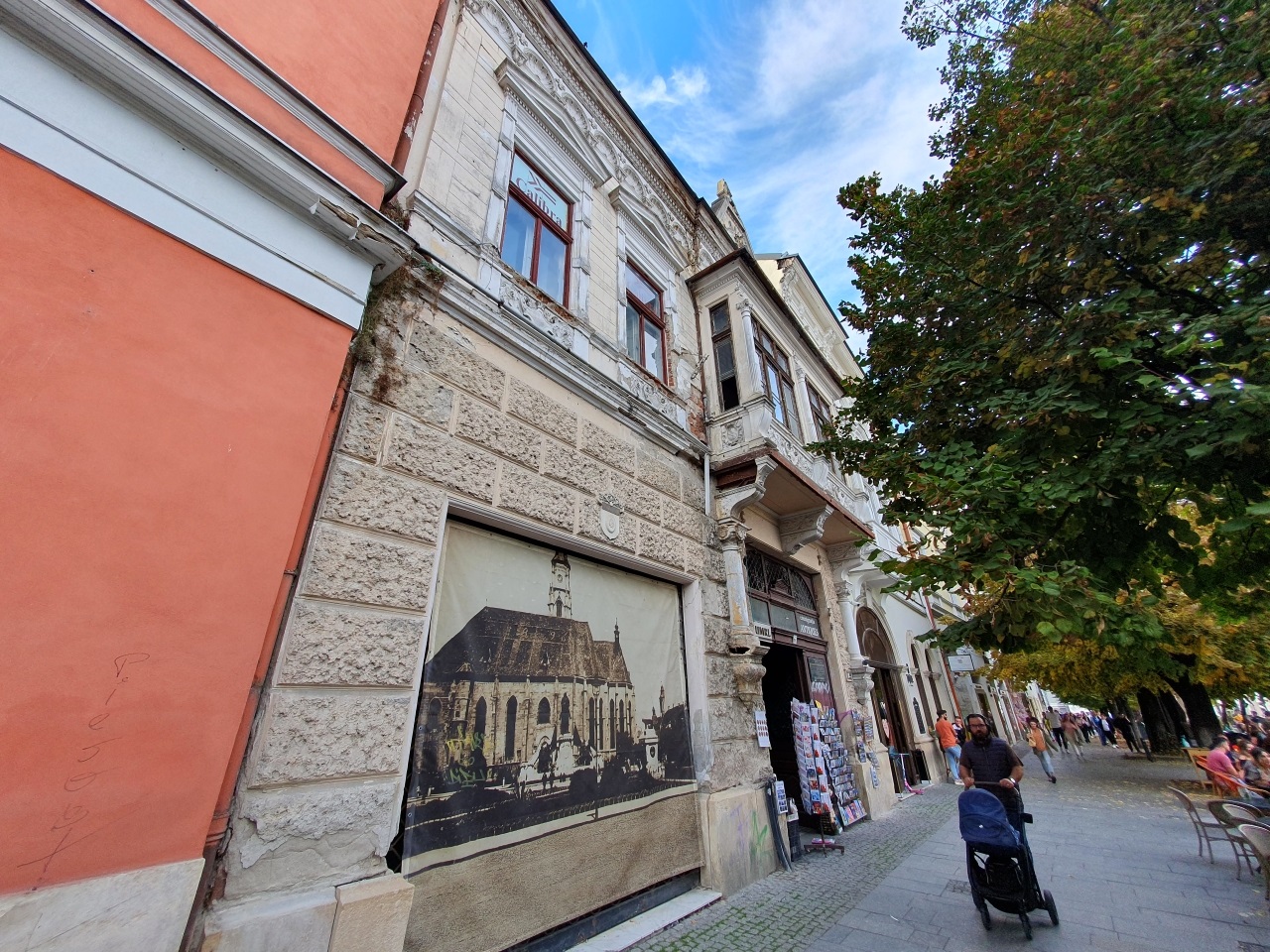
The Gyulay Palace or Wass House, built in the 15th century.

A lot of these buildings have a different destination today.
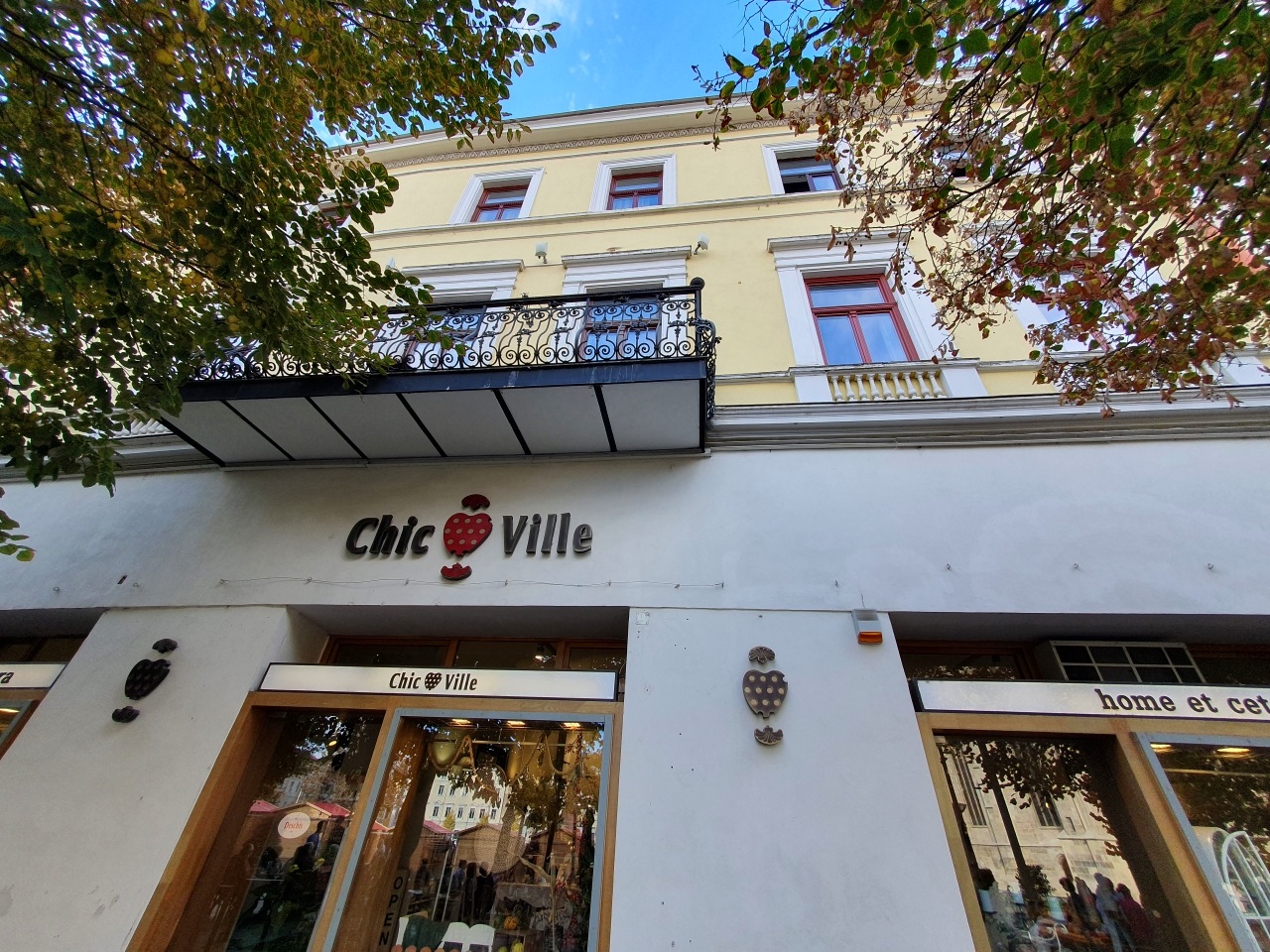
The Fröhlich House, built in the early 19th century.
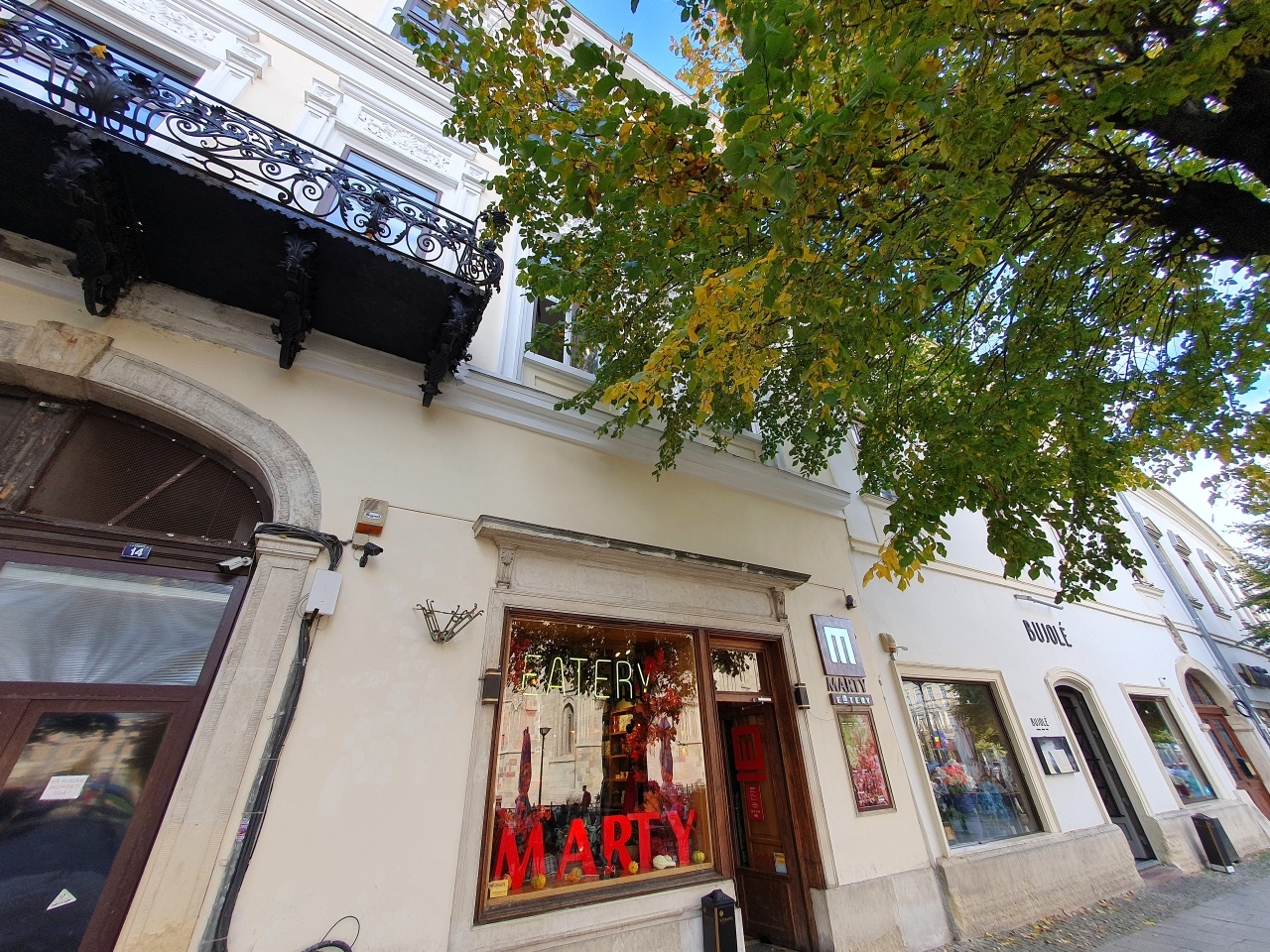
The Wesselényi House, built in 1876.
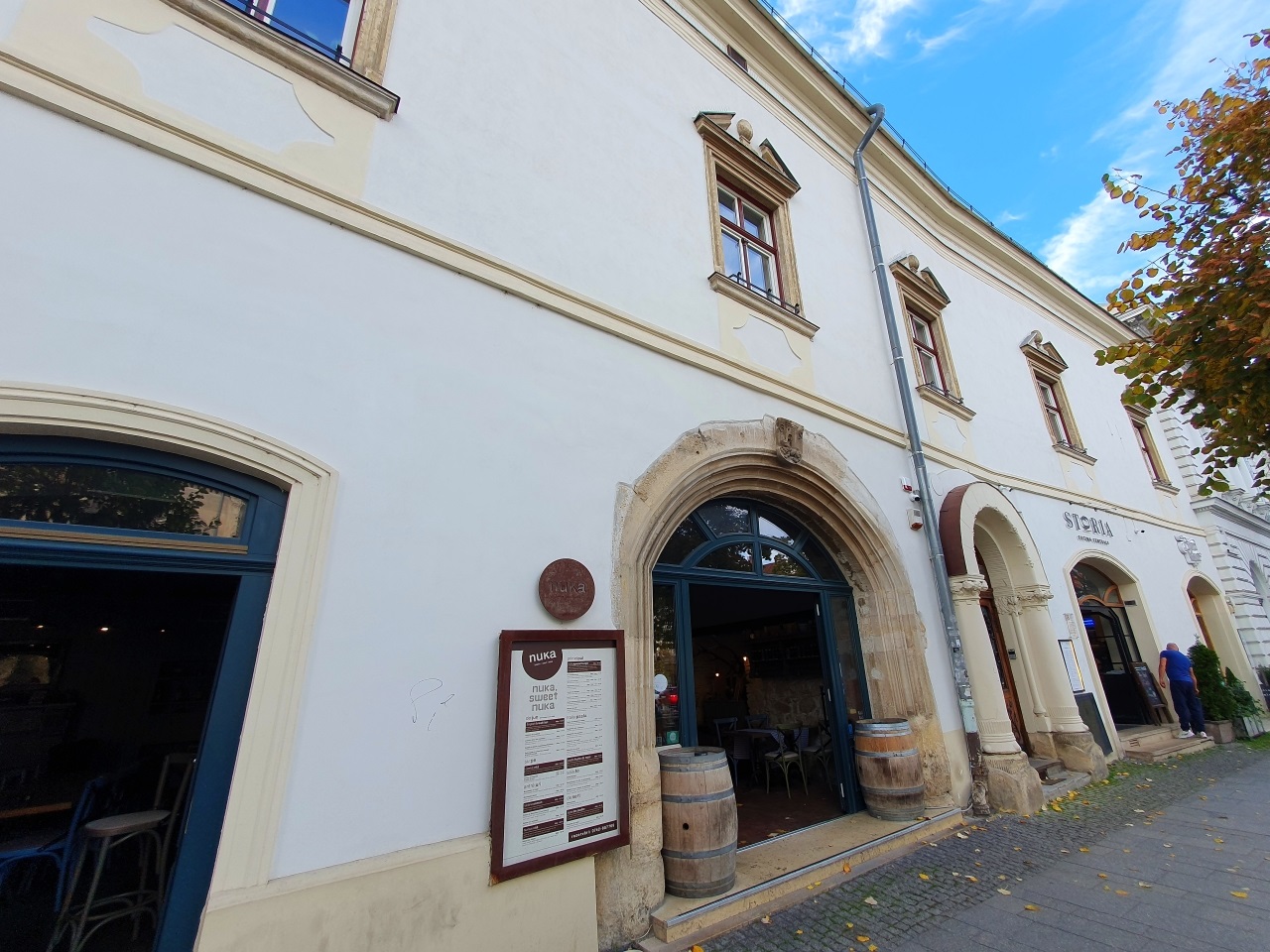
The Roman Catholic Parish, built in 1450. Now a place for restaurants and, during my student time, it was also the place of a discotheque.
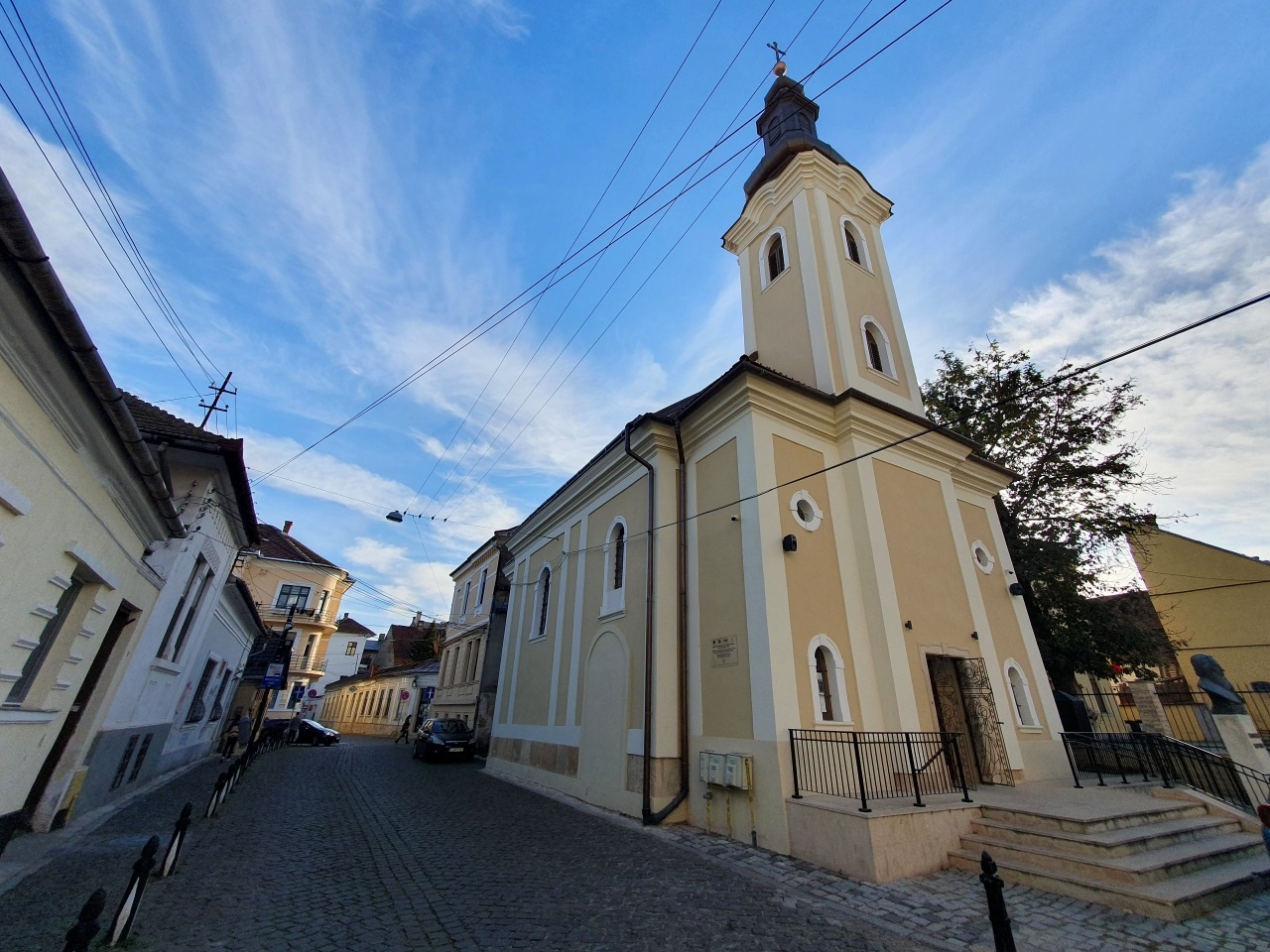
The last building that concludes our journey is the Resurrection of the Lord Greek Catholic Church, built in 1800 by the bishop Ioan Bob in the late Baroque style. Is is known by the locals simply as the Bob Church.
—
I would like to thank you for joining me in this journey through Cluj-Napoca!
